designer491/iStock via Getty Images
By Jill Mislinski
Here is the opening statement from the Department of Labor:
Seasonally Adjusted Data
In the week ending March 19, the advance figure for seasonally adjusted initial claims was 187,000, a decrease of 28,000 from the previous week’s revised level. This is the lowest level for initial claims since September 6, 1969, when it was 182,000. The previous week’s level was revised up by 1,000 from 214,000 to 215,000. The 4week moving average was 211,750, a decrease of 11,500 from the previous week’s revised average. The previous week’s average was revised up by 250 from 223,000 to 223,250.
The advance seasonally adjusted insured unemployment rate was 1.0 percent for the week ending March 12, unchanged from the previous week’s unrevised rate. The advance number for seasonally adjusted insured unemployment during the week ending March 12 was 1,350,000, a decrease of 67,000 from the previous week’s revised level. This is the lowest level for insured unemployment since January 3, 1970, when it was 1,332,000. The previous week’s level was revised down by 2,000 from 1,419,000 to 1,417,000. The 4-week moving average was 1,431,500, a decrease of 31,000 from the previous week’s revised average. This is the lowest level for this average since February 28, 1970, when it was 1,421,000. The previous week’s average was revised down by 500 from 1,463,000 to 1,462,500. [See full report]
This morning’s seasonally adjusted 187K new claims, down 28K from the previous week’s revised figure, was below the Investing.com forecast of 212K.
Here is a close look at the data over the decade (with a callout for the past year), which gives a clearer sense of the overall trend.
As we can see, there’s a good bit of volatility in this indicator, which is why the 4-week moving average (the highlighted number) is a more useful number than the weekly data. Here is the complete data series.
Here’s a copy of the above chart, but zoomed in, so the COVID spike isn’t as prominent. We’ll be adding a few more of these “zoomed in” looks in the coming weeks.
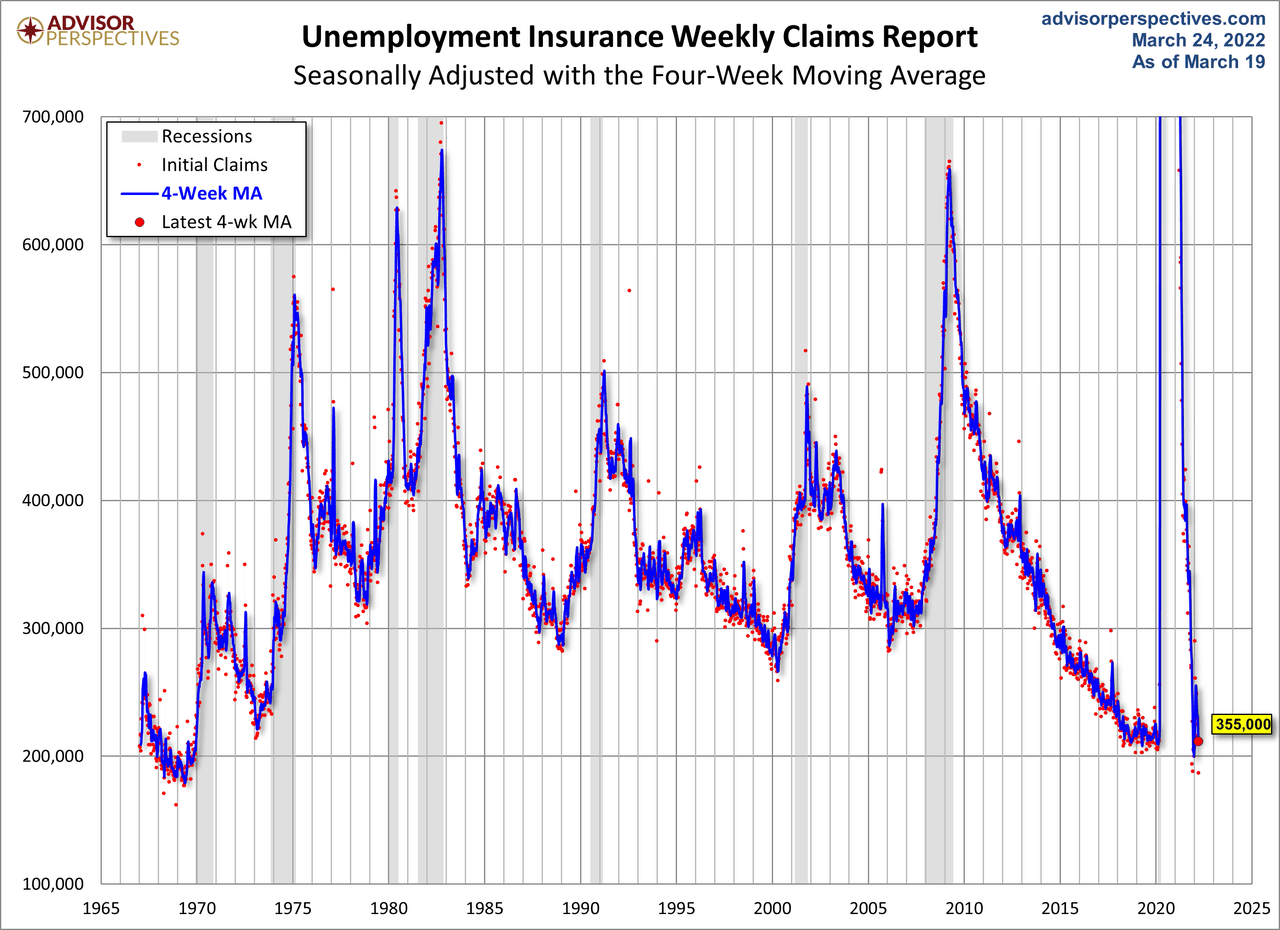
The headline Unemployment Insurance data is seasonally adjusted. What does the non-seasonally adjusted data look like? See the chart below, which clearly shows the extreme volatility of the non-adjusted data (the red dots). The 4-week MA gives an indication of the recurring pattern of seasonal change (note, for example, those regular January spikes).
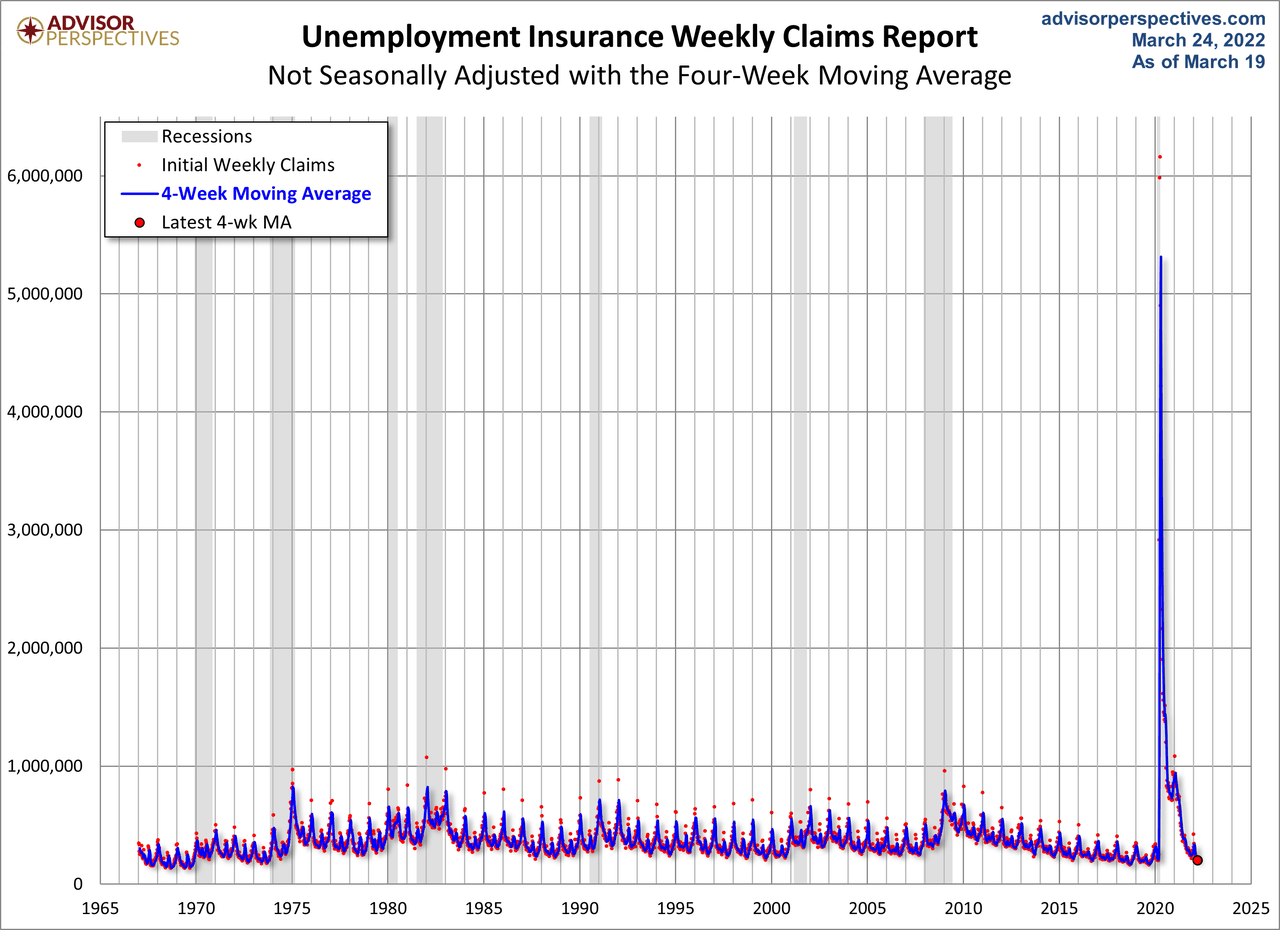
Because of the extreme volatility of the non-adjusted weekly data, we can add a 52-week moving average to give a better sense of the secular trends. The chart below also has a linear regression through the data.
Here’s a look at a sample of year’s claims going back to 2009.
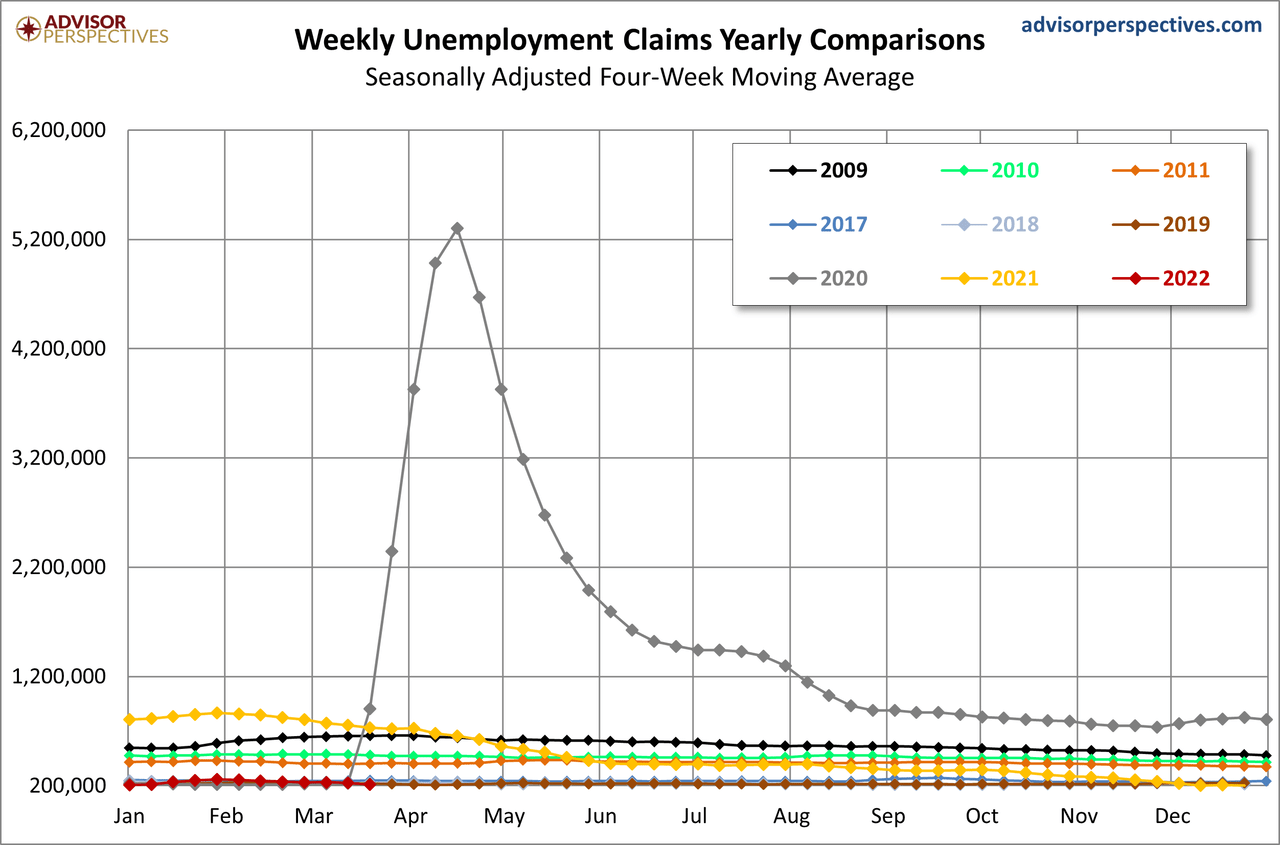
For an analysis of unemployment claims as a percent of the labor force, see this regularly updated piece The Civilian Labor Force, Unemployment Claims and the Business Cycle. Here is a snapshot from that analysis.
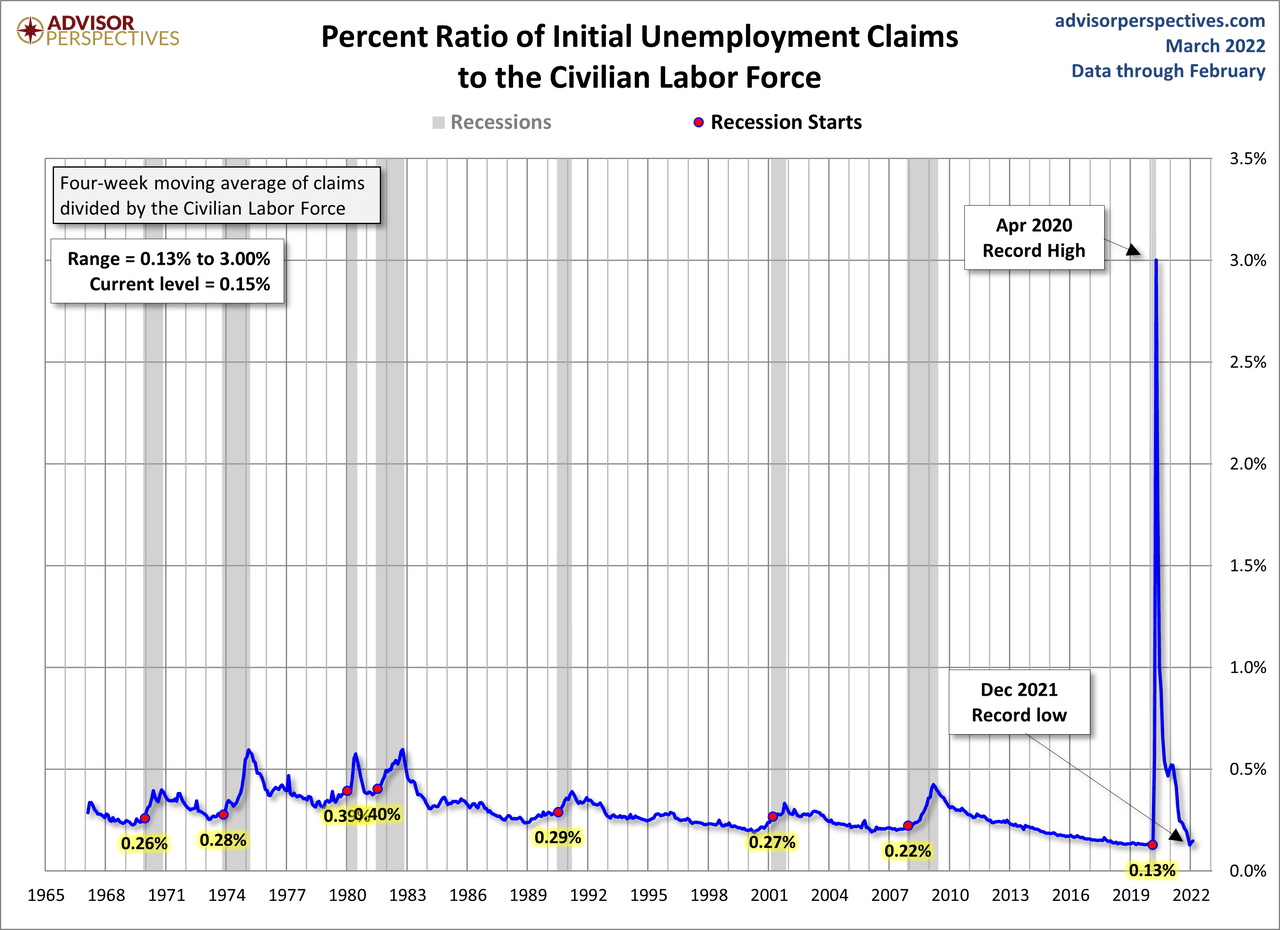
Editor’s Note: The summary bullets for this article were chosen by Seeking Alpha editors.


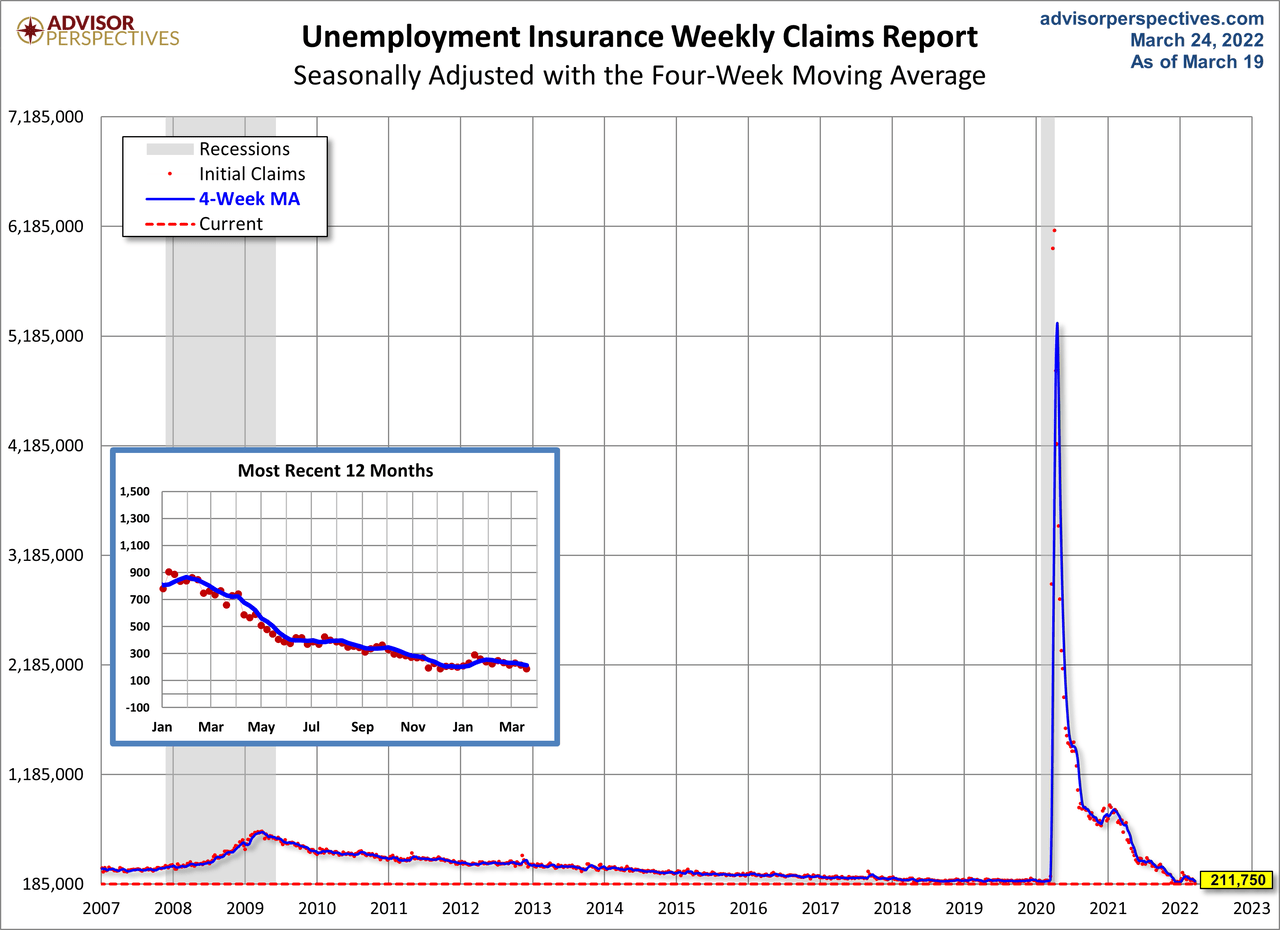
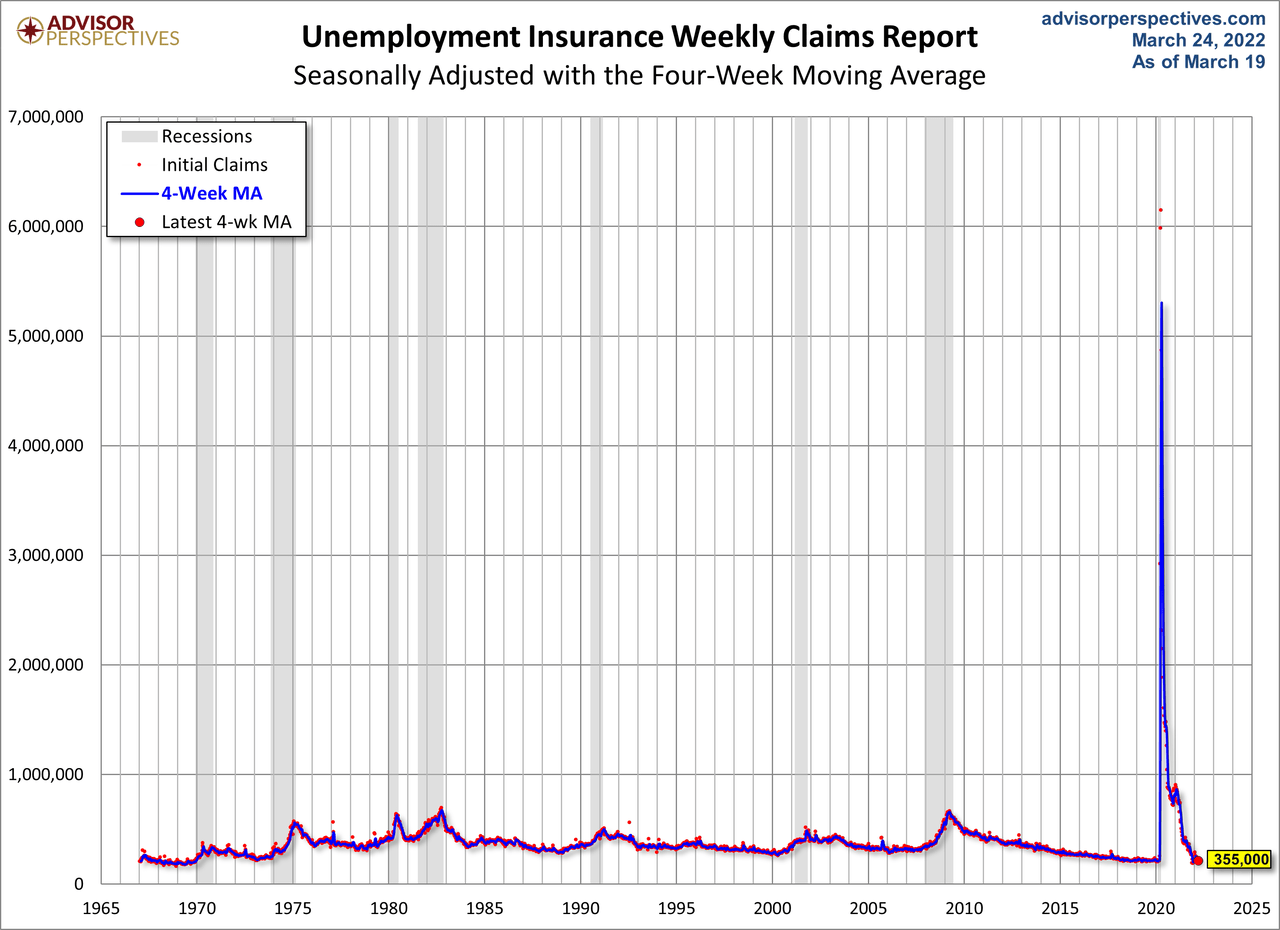
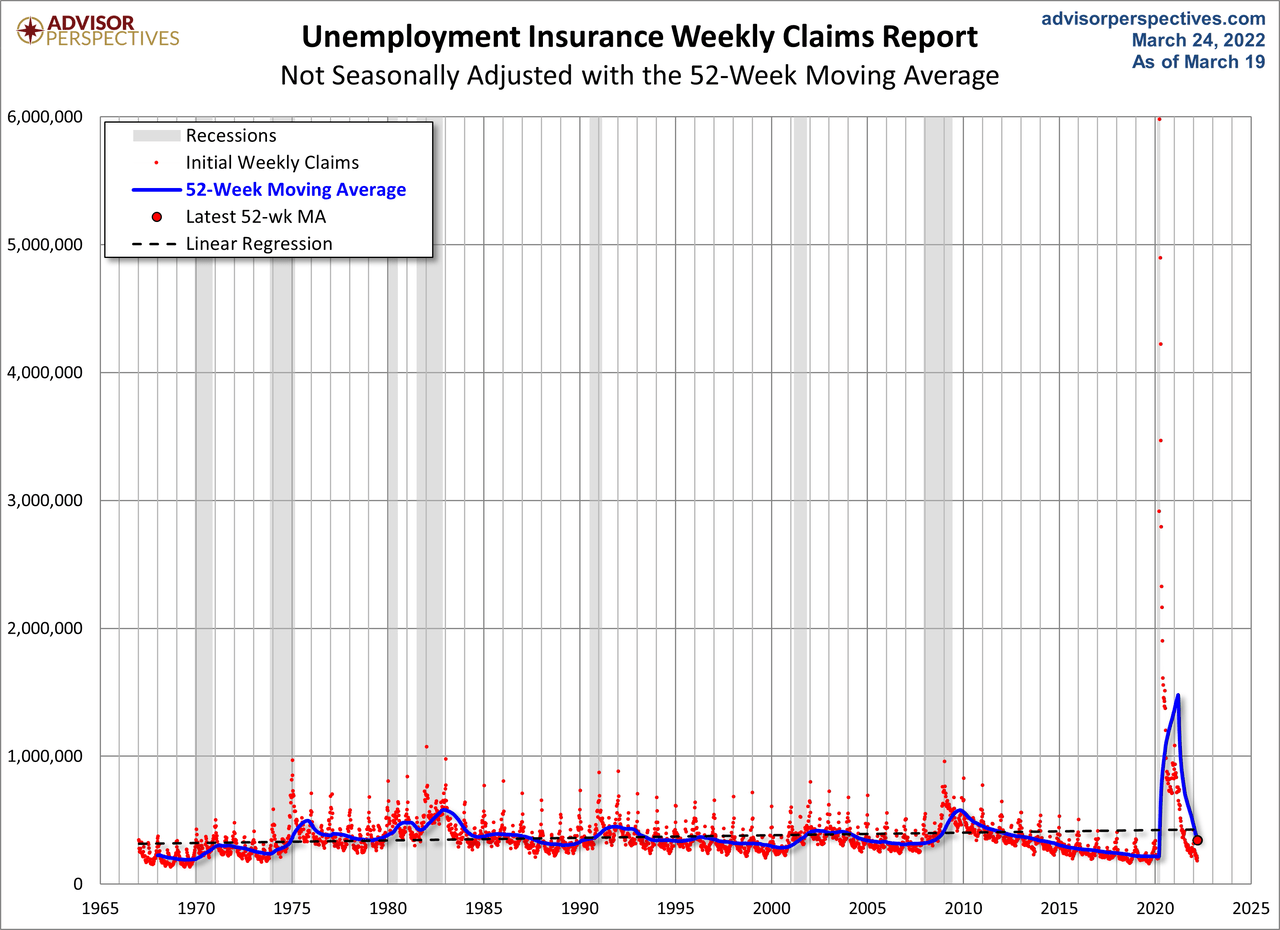
Be the first to comment